
Solar Panel Upgrade Norfolk: Boost your Home’s Energy Efficiency
Over 1.5 million homes now have solar panels, and this number continues to rise with the help of government grants and incentives, such as 0% VAT on installation costs (GOV.UK).
What if your solar panels were installed before 2018? Will they have the same efficiency as they previously had, and, how has technology progressed since they were installed? In this article, we delve into these questions to help you save hundreds in the long term.
Why Consider Upgrading Your Solar Panel System?
Solar technology has come a long way in the last decade, offering homeowners smarter, more efficient ways to harness renewable energy. Upgrading to modern solar panels, if your system is over eight years old, can help you lower your reliance on the grid, reduce energy bills even further, and ultimately add long-term value to your home. Here’s why it might be time to consider an upgrade.
Reducing your Energy Bills Further
As solar panels age and become less efficient, you may become more reliant on the grid to power your home. New solar panels have more advanced technologies and are between 22% – 25% more efficient compared to 2018 panels, which are between 18% – 20% (Sun Save). If you have pre-2018 panels with a battery, but you’re not sure how to make small improvements, consider switching to an energy tariff that uses renewable energy, or one with an overnight tariff so you can charge your storage system. Electricity stored in the battery can then be used during peak times, helping you reduce reliance on grid electricity and further lower your bills.

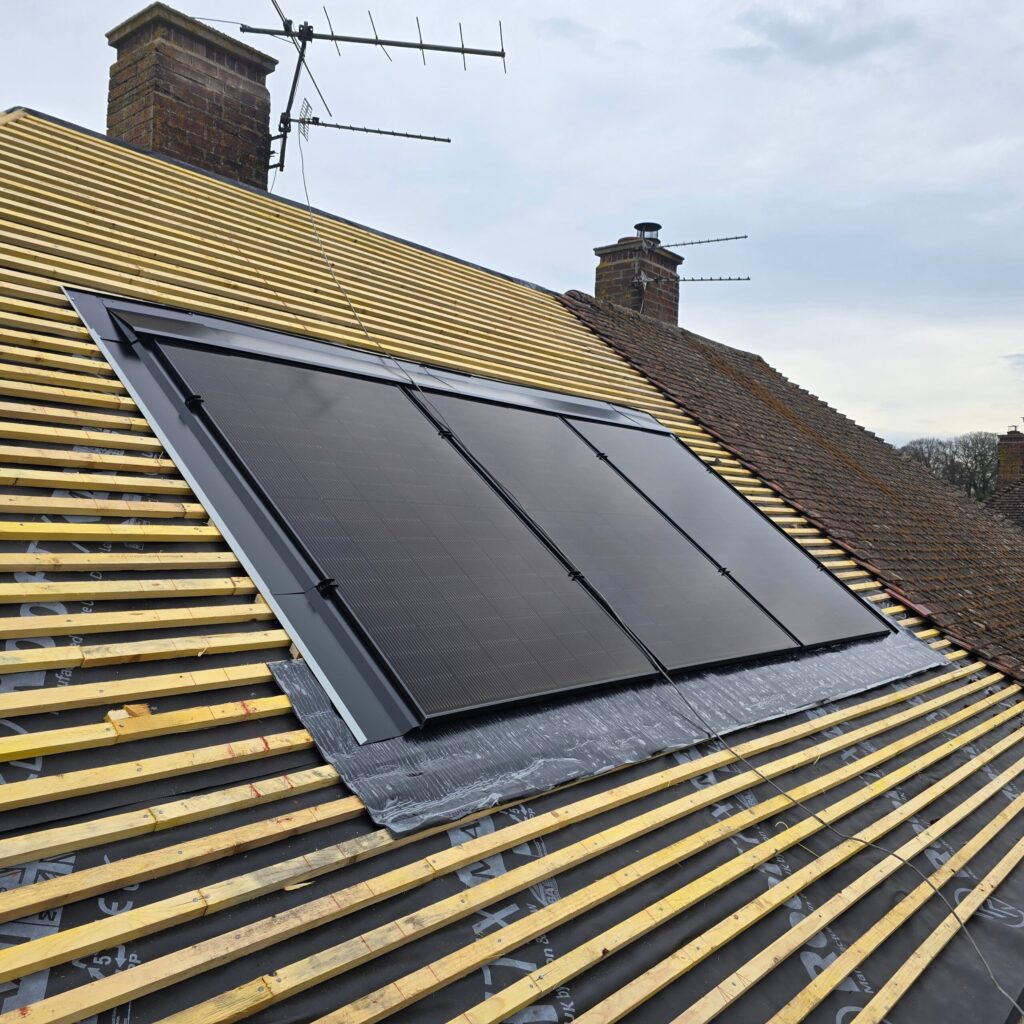
Increasing your Home’s Value
Investing in your home with renewable solutions, such as solar panels, air source heat pumps, and EV chargers, not only boosts energy efficiency but can also increase the property value and saleability.
To maximise the benefits, ensure your system is installed by an MCS-accredited installer like Aspect Group Services (MCS). This guarantees you receive the correct certification and documentation, which is essential for compliance, resale, and tariff eligibility.
Enhancing Energy Independence and Grid Resilience
With the energy crisis, homeowners are choosing to reduce their reliance on the grid, using renewable power instead. Adding a solar battery to a system means you can store excess energy produced during the day for use at night or during grid outages.

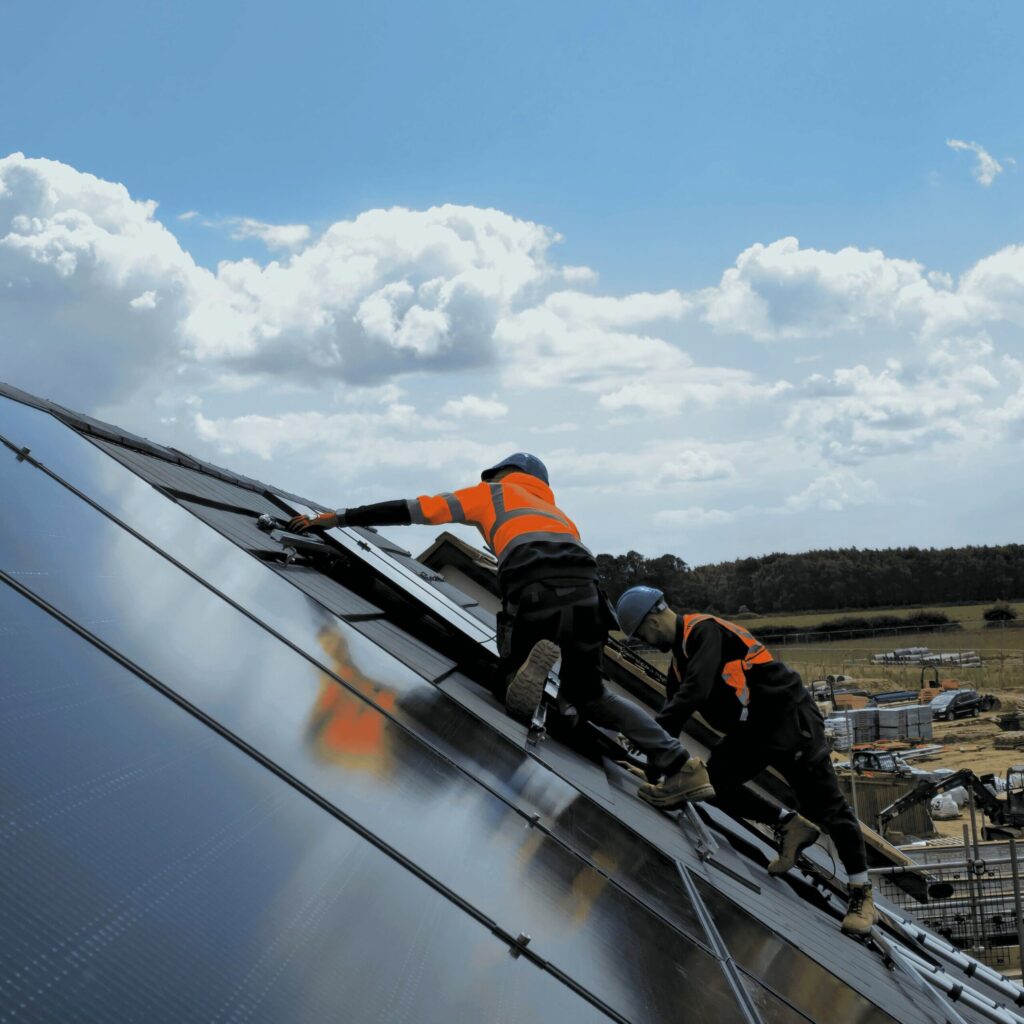
Reducing your Carbon Footprint
Solar panels can reduce carbon emissions by 1.3 to 1.6 tonnes a year (depending on the household and location within the UK), although this amount can reduce as solar panels age (OVO). With new solar panels, more eco-friendly materials are used, such as copper, making them more sustainable. Using an overnight tariff to charge your battery storage can also reduce your carbon footprint, particularly if you are with a renewable energy provider.
When is the Right Time to Upgrade your Solar System
If your current setup is struggling to meet your energy demands, showing signs of age, or simply behind modern advancements, it might be time to consider an upgrade. From physical damage and declining output to shifting household needs and outdated components, there are clear signs that your solar system could benefit from an upgrade. In this section, we’ll explore the key indicators that it’s time to take the next step in your solar journey.
- Ageing Solar Panels: If your solar system is at least 10 years old, you should look to replace it. This is for many reasons, particularly the advancements in technology since the first solar panels were produced. Now is the right time to invest as solar panels costs are continuing to reduce.
- Noticeable Drop in Energy Production: If there are repeated issues with the system’s performance, and you have noticed that the energy production has declined, then you should consider a solar panel service. An expert can monitor the system and the energy production and provide advice for possible system improvements.
- Physical Damage or Recurring System Faults: If your solar panels have sustained damage from a storm or show signs of general wear and tear, it could be time for a replacement, particularly as their efficiency is likely to have decreased. Regular servicing is essential for monitoring panel performance. Our experienced technicians can identify and resolve any faults promptly, helping to extend the life of your system and maintain optimal energy output. If these system faults appear regularly, then it may be time to upgrade.
- Desire for Increased Energy Needs (e.g., electric car charging, heat pump): If you’re looking to add more technology into your home, such as an EV charger or a heat pump, it’s important to check whether your current solar panel system can meet the increased energy demand. If your panels are only generating enough to cover your existing usage, you’ll need to rely on energy from the grid to power the rest of the technology. To maximise efficiency and minimise extra costs, it’s worth considering upgrading your solar setup before adding new devices to the system.
- Outdated technology and Inefficient Components: The feed in tariff government incentive made solar panels popular in 2010, but since then, the technology has advanced while the costs have decreased. There could also be aspects of the system, such as the inverter or the panels that are becoming inefficient, limiting the energy generation.

Are you Ready to Upgrade your Current Solar Panel System?
Contact our expert team today for tailored advice and a free, no-obligation quote.
Investing in a Solar Panel System
Solar panels have grown in popularity over the years and with the SEG (Smart Export Guarantee) payments, along with the savings on your energy bill from free electricity and massive advancements in panel efficiencies, there has never been a more efficient time to install solar, especially as they are almost always vital for making a carbon negative home.
To make the most of solar energy, add battery storage to collect excess power from your panels, ensuring you have electricity even when the sun isn’t shining. Some batteries, such as Tesla Powerwall 3 include the solar inverter, which can save space. The size of the house and the current energy consumption determines how many solar panels and batteries are required to effectively power your lifestyle. Read our case study below to learn how Theo and Maddie made a carbon negative home.
What are the benefits of Solar Panels:
- Selling energy back to the grid: Creating a carbon negative home will mean you have excess energy you produce, which you can sell back to the grid for a profit.
- Power during Storms: Are you fed up of power cuts? Using Solar Panels with Battery Storage ensures there is power always ready, particularly during times of storms.
- Short Payback Period: Solar panels will not only reduce your energy bills but also offer a fast return on investment, allowing you to enjoy long-term savings.
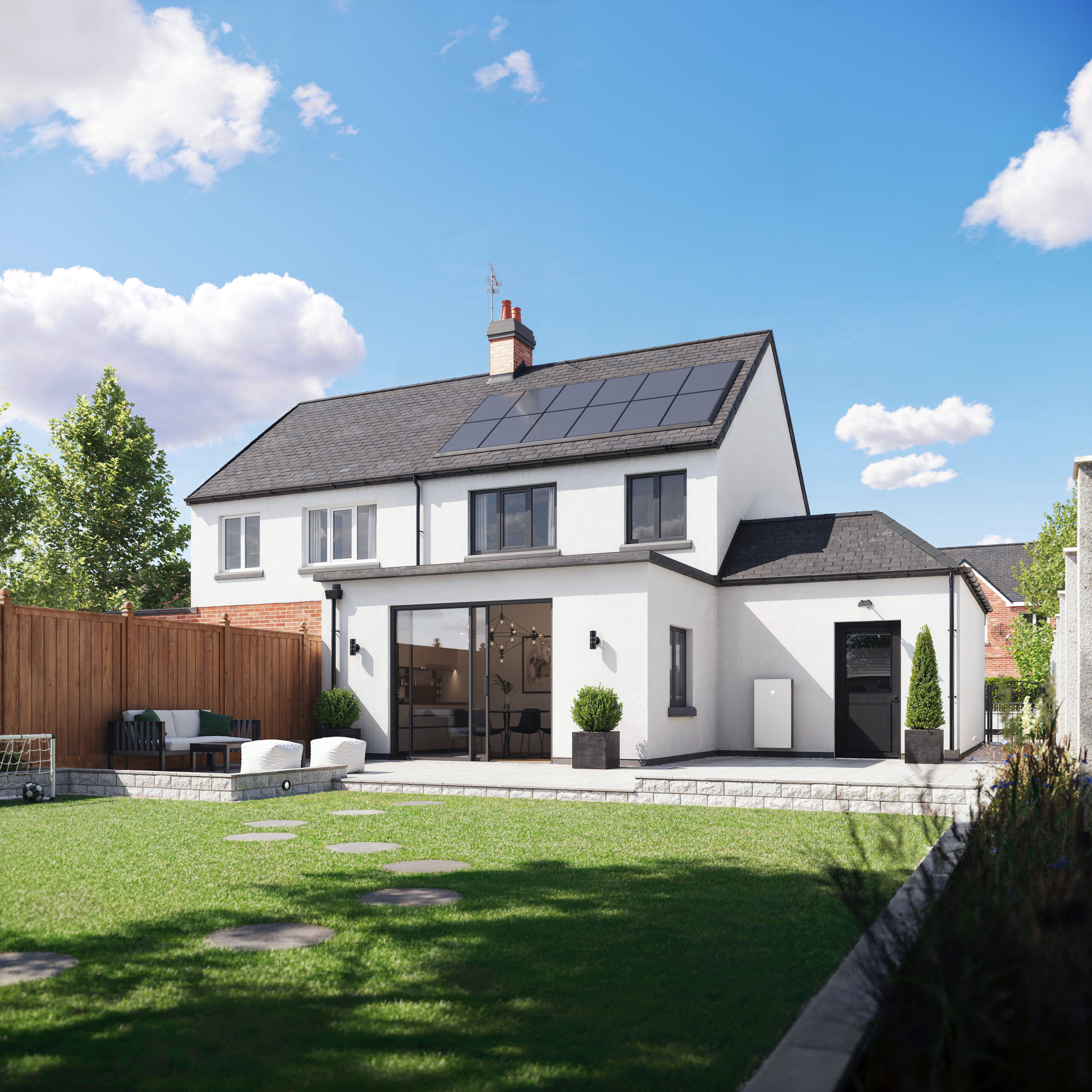
Case Study: The Wright Family
In 2017, the Wright family had a 3.2kW solar PV system installed on their semi-detached property in Dereham, Norfolk. At the time, this system was considered efficient and provided a noticeable drop in their annual electricity bills.
Fast forward to late 2024, Jeremy and Olivia began to notice that their electricity bills were slowly creeping back up, especially during the autumn and winter months. With plans to install an electric vehicle (EV) charger and a heat pump in the near future, they realised their current system wouldn’t meet their growing energy needs.
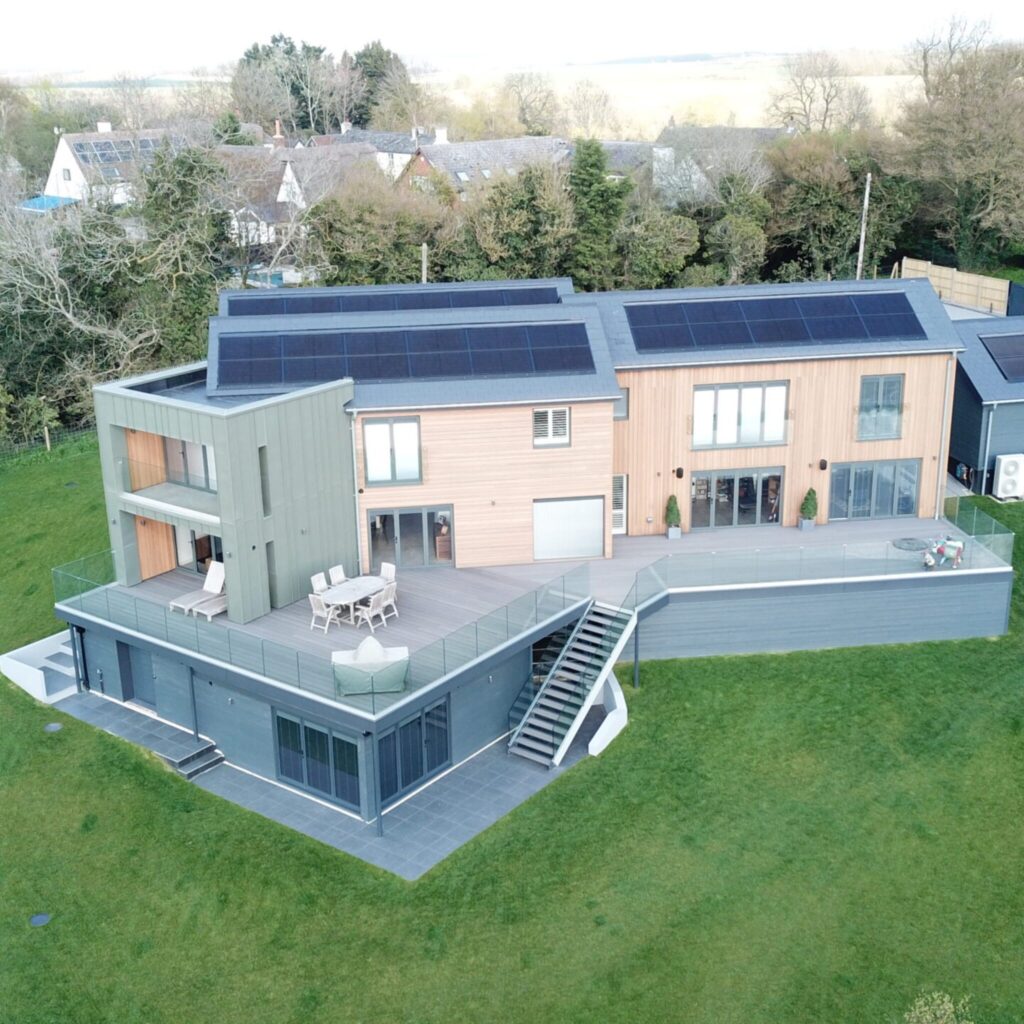
Why They Chose to Upgrade:
The Wrights had several motivations for upgrading their solar panel system:
- Reduced efficiency: Their original panels were now eight years old and producing roughly 12–15% less energy than when first installed.
- Higher energy usage: A growing family, more home electronics, and interest in switching to greener alternatives.
- Preparing for an EV and heat pump installation.
- Rising electricity costs due to the ongoing energy crisis.
After receiving an energy audit and assessment from Aspect Group Services, it became clear that upgrading both their panels and inverter, along with adding a battery storage unit, would deliver significant long-term benefits.

What was Upgraded:
New Solar Panels: Replaced old polycrystalline panels with modern monocrystalline panels rated at 22.5% efficiency.
System Size Expansion: Increased capacity from 3.2kW to 5.5kW.
Battery Storage: Installed a Tesla Powerwall 3, enabling overnight charging and better daytime utilisation.
Inverter: Replaced outdated string inverter with smart micro-inverters to maximise performance, particularly during shaded periods.

Energy Bill Savings:
Before Upgrade: Annual electricity bill averaged £950.
After Upgrade (projected 2025): Reduced to £380, a 60% saving.
Battery Storage Impact: Allows them to run most of their appliances from stored energy, particularly in the evenings and early mornings when rates are higher.
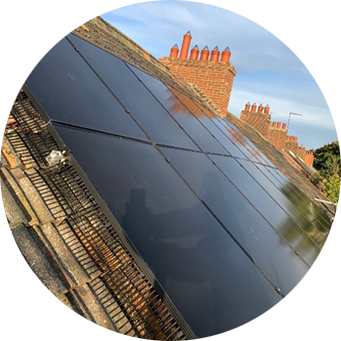
Payback Period:
Total upgrade cost: £10,500 (including battery and installation).
With energy bill savings, Smart Export Guarantee payments, and 0% VAT, their estimated payback period is just over 8 years (based on the family using 4,200 kWh of electricity per year).

Long-Term Benefits:
Energy Independence: The family now generates over 80% of their annual electricity usage on-site.
Future-Proofed for EV and Heat Pump: The system is ready to handle additional load, and the battery will help buffer peak usage.
Environmental Impact: Their carbon footprint has been reduced by approximately 1.5 tonnes of CO₂ per year.
Increased Property Value: A local estate agent confirmed the solar upgrade could increase their home’s value by up to £12,000, particularly due to the inclusion of battery storage.
What they had to Say:
“Upgrading our solar panels was the best decision we’ve made for the house since we moved in. We’re saving hundreds on our bills already, and it’s a good feeling knowing we’re doing our bit for the environment too,” says Olivia.
“Aspect Group Services were professional throughout and gave us complete confidence with their MCS accreditation. The battery has been a game-changer, and we’re excited to add an electric vehicle soon,” adds Jeremy.
Are you Ready to Upgrade your Current Solar Panel System?
Contact our expert team today for tailored advice and a free, no-obligation quote.
Types of Solar Panel Upgrades
If your system is becoming outgrown, there are a range of upgrade options that can improve your setup. Below, we explore the key types of solar panel upgrades available to ensure you’re making the most of your renewable energy investment.
- Replacing Existing Solar Panels: Upgrading to newer, more efficient solar panels is one of the most common improvements homeowners make. Since 2018, solar technology has advanced significantly, offering greater energy output and performance. The maximum output from a panel in 2018 was around 280W, but now 440W panels are common place, which is a 60% increase.
- Upgrading your Solar Inverter: The solar inverter is a critical component of your system, responsible for converting the direct current (DC) electricity produced by your panels into usable alternating current (AC) power for your home. Older systems often rely on inverters that are bulky and separate from battery storage units, taking up space. Inverter technology has also progressed with all modern systems having smart features allowing monitoring and adaptive controls to suit household energy use, particularly when used alongside a battery storage system.
- Adding or Upgrading Battery Storage: With a battery setup, any excess electricity generated during the day can be stored for use at night or during periods of low sunlight; alternatively, this surplus energy can be sold back to the national grid for an additional income. If you’re considering this upgrade, the Tesla Powerwall 3 features a fully integrated inverter and converter.
- Expanding your Current Solar Array: As technology has advanced, today’s solar panels have become smaller, more powerful, and efficient, so homeowners can expand their current solar array by adding additional panels to unused roof space. Expanding your array can deliver significant long-term savings and a reduced carbon footprint (depending on your energy usage and system cost).

Solar Panel Upgrade Costs in Norfolk (2025)
While the region benefits from steady government support and an active renewables market, upgrade costs can differ depending on household needs and system specifications. Whether you’re expanding an existing array, upgrading the inverter, or switching to battery storage, costs in Norfolk reflect the work required.
- What are the Costs for Upgrading Solar Electricity Systems in Norfolk? In Norfolk, the cost to upgrade a solar electricity system generally ranges between £2,500 and £6,000, depending on the size of the property. For example, adding more panels to an existing system can start from £2,000, while integrating a battery storage unit could cost upwards of £5,000.
- Average Costs for Different Upgrade Types: Depending on the upgrades, the costs can vary, particularly if you’re looking at more technologically advanced options. Expanding panel capacity might cost around £300–£500 per panel installed, whereas upgrading your inverter typically falls between £1,000–£2,000, depending on its output and functionality.
- Factors Influencing Upgrade Costs (System Size, Panel Type, Labour): The size of your house, shape of your roof, and system requirements can impact the overall cost of the upgrade. Larger systems naturally demand more panels and possibly higher-capacity batteries. Roof type can influence the costs, with pitched roofs requiring different mounting hardware and more complex labour compared to flat roofs.
- Potential Long-Term Savings and Payback Periods: The long-term savings for solar panels are often considerable. On average, homeowners in Norfolk can expect a payback period of 6 to 10 years, depending on usage habits, energy tariffs, and the size of the system. With energy prices likely to remain volatile, investing in modern solar technology now could create even greater savings in the years to come.

UK Government Incentives and Grants for Solar Upgrades
While the feed in tariff is no longer available to homeowners, having ended in 2019, there are other financial incentives for homeowners to invest in a modern solar panel system for their home. In this section we explain the current incentives available to homeowners.
0% VAT on Solar and Battery Storage
Until 31st March 2027, homeowners can benefit from 0% VAT on the installation of solar panels and battery storage systems (Correct as of June 2025). This tax relief is part of the government’s wider push for greener energy solutions, The grant applies to residential properties and can be used alongside the Smart Export Guarantee (SEG), which allows homeowners to earn money by exporting excess electricity back to the grid.
Smart Export Guarantee (SEG)
The replacement to the feed in tariff is the smart export guarantee (SEG), which enables homeowners to receive an export tariff for the surplus electricity that is produced. These payments are made either monthly or quarterly based on the supplier.
As MCS certified installers, Aspect Group Services can help you join the SEG scheme. To ensure you are compliant, you must be with a supplier such as Octopus Energy or British Gas and have a smart meter installed. Energy suppliers will likely offer different tariffs, so make sure to shop around to ensure you’re getting the best deal possible. If you have an existing system that is connected to the feed in tariff, you can’t add an additional system and benefit from the SEG tariff too.
ECO4 Scheme and Home Upgrade Grant (Eligibility)
The ECO4 Scheme and Home Upgrade Grant are UK government-backed initiatives designed to improve energy efficiency in low-income and vulnerable households. ECO4, running until March 2026, helps homeowners with EPC ratings of D–G to access free or subsidised renewable energy solutions, especially if they receive means-tested benefits or meet local authority criteria. The Home Upgrade Grant targets off-gas-grid homes with similar EPC ratings, offering support for renewable heating, insulation, and solar panels. Both schemes aim to reduce electricity bills and carbon emissions.
Energy providers, like E-on offer schemes for lower income houses, such as free solar panels and solar panel grants.
What happens if I have a Feed in Tariff?
If you had your solar panels installed with a feed in tariff (FiT), but have noticed a decline in your panels performance, you may wish to upgrade, but how will this impact the tariff and could you lose it?
The FiT incentivised renewable energy production through solar panels and wind turbines by offering homeowners generation tariffs, no matter if the energy was used for household appliances or exported to the grid. The energy was exported back to the national grid, homeowners would receive an additional tariff. These tariff levels were set when homeowners joined the scheme, and lasted for 20 – 25 years (Based on the payback period).
Before you upgrade your system, you should contact your energy provider to inform them of your plans, which ensures you remain compliant for the tariff to continue. When upgrading, you should ensure like for like replacements are selected, as if you increase the solar power capacity, you could lose the tariff.
Overall, making system upgrades while receiving FiT payments is possible, make sure to inform the installer that you are on the tariff and your energy provider with the explicit changes you wish to make.
Conclusion: Is a Solar Panel Upgrade Worth it for You?
As technology continues to evolve and energy prices remain unpredictable, having a modern, efficient solar system gives Norfolk homeowners greater control over their bills and energy independence.
Whether your panels were installed before 2018 or are simply showing signs of wear, upgrading can increase your system’s output, help you meet growing household energy needs, and improve overall home value. Adding battery storage, replacing ageing inverters, or even expanding your solar array can maximise both savings and sustainability.
With government incentives like 0% VAT on installations and the Smart Export Guarantee, upgrading has never been more accessible, especially if you’re planning to integrate EV chargers or heat pumps in the near future. And, as seen in the Wright family’s case, the long-term financial and environmental benefits are clear.
Before committing to an upgrade, always choose an MCS-certified installer like Aspect Group Services to ensure your system meets compliance standards, maintains eligibility for government schemes, and delivers reliable performance. Don’t forget to check reviews, ask for references, and get multiple quotes to find the right installer for your solar journey.
Before starting any upgrade, remember to check with your local council for any planning permissions, permitted development rights, or funding opportunities that may apply. The team at Aspect Group Services can help you do this.
So, is a solar panel upgrade worth it? If your current system is more than 8–10 years old, underperforming, or unable to meet your future energy plans, then the answer is a yes. Now’s the time to harness the full potential of solar energy and take charge of your home’s energy future.


